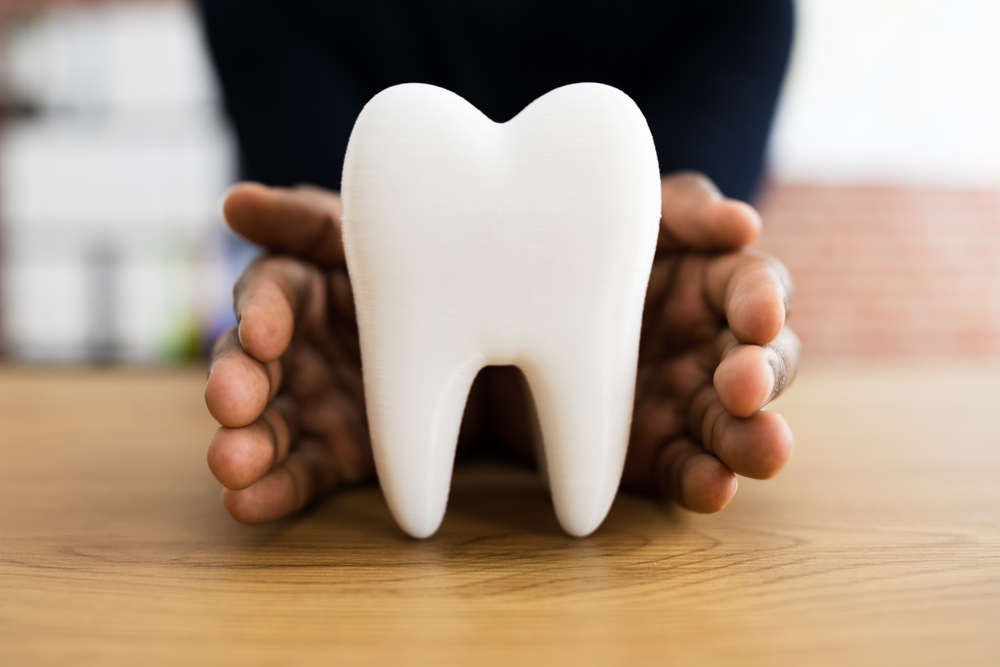Tag: teeth whitening dentist near me
When is Whitening Not Advisable? Litchfield MN
Your smile is your most distinct feature when interacting with people. But over time with aging, the use of tobacco products, drinking colored beverages like wine and coffee, using some spices, taking antibiotics like tetracycline, consuming excess fluoride in water, and other factors can cause your teeth to discolor or darken, affecting the appearance of your smile.
Fortunately, patients above the age of 10 years can consider the different methods of teeth whitening for their permanent teeth. Your dentist will determine whether your teeth are healthy enough to have a successful whitening procedure. There are some stains, such as those caused by tooth developmental conditions or medications that cannot be completely removed with whitening. Any dental restorations, including fillings and crowns, also do not respond to bleaching. To create uniformity in your smile, your dentist can recommend several alternatives or complementary teeth whitening options.
When is Whitening Not Advisable?
If your tooth enamel is damaged and you are already sensitive to cold and hot foods and drinks, then bleaching or any other whitening procedure may aggravate your sensitivity. That said, there are lower strength whitening treatments that can be recommended to people with worn/eroded enamel or tooth sensitivity. The treatments can also be used less frequently to reduce sensitivity. In addition, your dentist can recommend a way to reduce sensitivity after the whitening procedure.
Keep in mind that, there are many different whitening options for different teeth requirements, including those with very thin enamel. It is essential that you follow your dentist’s instructions for your specific treatment.
Final Note
Although teeth whitening leaves your teeth looking impeccably white, the longevity of the results will depend on your diet and habits. The amount of time that you can enjoy your sparkling smile depends on multiple factors. If you drink tea, coffee, wine, or use tobacco products, your teeth will stain again sooner, and you will need more subsequent whitening procedures.
Please contact your dentist to discuss ways to improve your smile with teeth whitening.
What to Expect with Teeth Whitening in Litchfield MN
Proper brushing and flossing every day can help to keep your smile bright and breath fresh. Factors such as aging, consuming colored foods and drinks, and lifestyle habits such as chewing or smoking tobacco products can cause your teeth to discolor and get darker.
Fortunately, there are several options for teeth whitening to help improve the shade of your teeth and maintain the shade with follow up treatments as recommended by the dentist. Before treatment, the dentist will examine your teeth to establish the cause and severity of the discoloration, and then propose various whitening options that will be most suitable for your case to ensure that you get the desired results and the smile of your teeth. The results may fade with time depending on your diet, age, and lifestyle choices, so subsequent treatments may be necessary to maintain a white smile.
Good Candidates for Teeth Whitening
Teeth whitening is most effective on surface stains, and while anyone from the age of 10 years and above can be a good candidate for bleaching, there are a few cases when your dentist may prevent you from proceeding with the treatment. These include:
- Tooth and gum sensitivity – Sensitivities may disqualify you from using certain whitening techniques
- The natural color of your teeth – Intrinsic stains are harder to bleach compared to extrinsic stains
- The presence of crowns, fillings, bridges, or veneers – These do not bleach the same as natural teeth, which means that you may have to replace them after whitening your teeth to achieve a uniform look
- Exposed roots – These surfaces are harder to whiten effectively compared to tooth enamel, which means that you may have to consider alternative methods.
Your dentist will assess your teeth and mouth during your first visit to determine your suitability.
Final Note
Teeth whitening is not permanent, and people who expose their teeth to tobacco products and colored foods and beverages that cause staining may realize faster fading of the results. The more you exercise proper oral hygiene after bleaching, the longer you will stay without requiring touch-up whitening treatment.
Please contact your dentist to discuss ways to improve your smile with teeth whitening.
5 Questions to Consider Before Scheduling your Teeth Whitening Treatment | Litchfield MN
If you’re planning to get your teeth whitened, it’s important that you do your research to find the right dentist and dental practice. The bleaching procedure is generally safe and effective when done by a dentist during the first visit, and under a dentist’s supervision for subsequent treatments. That said, everyone should first visit a dentist for a thorough examination and diagnosis to ensure you’re a good candidate for a safe, brighter, whiter smile.
Here are some questions to help you choose the right dentist:
Can teeth cleaning and polishing brighten my teeth without bleaching?
Professional teeth cleaning and polishing is done in order to remove calculus and surface stains caused by colored drinks like tea and red wine, tobacco products, foods, and so on. However, this will not change the color of stained or yellowing teeth. Teeth cleaning can help you remove deep stains and discoloration that won’t go away with routine cleaning and polishing.
How is in-office teeth whitening done?
The dentist applies a bleaching product (usually hydrogen peroxide) on the surface of your teeth using trays that fit snugly on your teeth. The trays stay in place for a short period of time to break down the agent into oxygen, which then penetrates tooth enamel to change the shade of your teeth.
Will I achieve the results I want?
Yes. Most cases of tooth whitening are successful. That said, the treatments work differently depending on the extent of discoloration or staining at the start of the procedure. Fortunately, your dentist will discuss with you about your treatment plan and inform you beforehand about the best way to whiten your teeth, any difficulties, and even the expected results.
Can teeth whitening be done outside a dentist’s office?
It’s recommended that you consult a dentist to design your bleaching plan that can then be done in the office or at home with a customized teeth whitening kit. This is important because dentists are trained to choose the best treatment plan for your case; estimate the improvement in shade that you will achieve; and inform you how long your treatment will last.
In which situations might tooth whitening be unsuccessful?
Tooth whitening only helps to improve the shade of your natural teeth. This means that it may not be successful when used on unhealthy teeth, teeth with exposed roots, or teeth that have been restored with fillings, crowns, veneers, or have received root treatments.
Please consult your dentist to discuss your bleaching plan and the expected results of your teeth whitening treatment.
FAQs – In-Office Teeth Whitening in Litchfield MN
White teeth are associated with beauty, increased confidence, and a healthy lifestyle. However, smoking and chewing tobacco, drinking black tea or coffee and wine, using medications such as tetracycline, swallowing too much fluoride, and aging can cause your teeth to become stained.
Teeth whitening or bleaching involves the use of simple and non-invasive treatments designed to change the color of your natural tooth enamel to give you a dazzling smile. Having white teeth is the leading aesthetic concern for most dental patients. Fortunately, there are multiple ways – including home and in-office – to whiten teeth, with varying degrees of effectiveness.
Reasons to Consider Teeth Whitening
Some of the reasons why people consider teeth whitening include:
- To improve their smile
- To increase their confidence
- To prevent discoloration from worsening
Teeth whitening can be used to stop the progression of tooth discoloration, especially in combination with lifestyle adjustments
Since improving your smile is an investment, the last thing you want to see are signs of discoloration on your pearly whites coming up only a few months after treatment. To maintain your newly achieved bright smile, you should:
- Avoid stain-causing foods and drinks – Many colored foods and drinks can stain your white teeth. So, reduce or avoid your intake of tomatoes, berries, grape juice, red wine, coffee, tea, sports drinks, cola, and grape juice.
- Rinse your mouth with water after eating and drinking – Every time you indulge in items that can stain your mouth, it is important that you rinse your mouth with clean water right after. Swishing a little water after eating or drinking can help reduce staining.
- Stop smoking – Smoking is not only bad for your health, but also your teeth. The nicotine, tar, and tobacco in cigarettes, cigars, and pipes will stain your teeth.
- Practice proper oral hygiene – Daily brushing, at least every morning after breakfast and at night before bed, and daily flossing will help remove food debris and plaque, and keep your mouth clean and stain-free.
Final Note
Tooth bleaching only works for natural teeth, and the results don’t last forever. Artificial dental treatments, including crowns, fillings, and veneers are resistant to stains, which means that these won’t respond to the whitening agents. Moreover, you need a touch-up every year or sooner – as advised by your dentist – depending on your diet and lifestyle to maintain your bright smile
Please schedule your consultation today to discuss ways to improve your smile.
Professional In-Office Teeth Whitening in Litchfield MN
Proper brushing and flossing every day can help to keep your smile bright and breath fresh. Factors such as aging, consuming colored foods and drinks, and lifestyle habits such as chewing or smoking tobacco products can cause your teeth to discolor and get darker.
Fortunately, there are several options for teeth whitening to help improve the shade of your teeth and maintain the shade with follow up treatments as recommended by the dentist. Before treatment, the dentist will examine your teeth to establish the cause and severity of the discoloration, and then propose various whitening options that will be most suitable for your case to ensure that you get the desired results and the smile of your teeth. The results may fade with time depending on your diet, age, and lifestyle choices, so subsequent treatments may be necessary to maintain a white smile.
Good Candidates for Teeth Whitening
Teeth whitening is most effective on surface stains, and while anyone from the age of 10 years and above can be a good candidate for bleaching, there are a few cases when your dentist may prevent you from proceeding with the treatment. These include:
- Tooth and gum sensitivity – Sensitivities may disqualify you from using certain whitening techniques
- The natural color of your teeth – Intrinsic stains are harder to bleach compared to extrinsic stains
- The presence of crowns, fillings, bridges, or veneers – These do not bleach the same as natural teeth, which means that you may have to replace them after whitening your teeth to achieve a uniform look
- Exposed roots – These surfaces are harder to whiten effectively compared to tooth enamel, which means that you may have to consider alternative methods.
Your dentist will assess your teeth and mouth during your first visit to determine your suitability.
Final Note
Teeth whitening is not permanent, and people who expose their teeth to tobacco products and colored foods and beverages that cause staining may realize faster fading of the results. The more you exercise proper oral hygiene after bleaching, the longer you will stay without requiring touch-up whitening treatment.
Please contact your dentist to discuss ways to improve your smile with teeth whitening.
What to Expect with Teeth Whitening in Litchfield MN
Teeth whitening, or simply bleaching, is a straightforward, non-invasive dental solution for changing the color of natural tooth enamel, and to enhance the appearance of your smile.
Getting whiter teeth is considered the most popular esthetic concern for most dental patients. Common reasons for teeth whitening include:
- Normal wear of tooth enamel
- Excess fluoridation (fluorosis) during early tooth development
- Stained teeth due to smoking or medications like tetracycline
- Brown or yellow stained teeth
Generally, any patient above the age of 10 years can consider teeth whitening to enhance their smile and boost confidence. However, it is not recommended for patients with oral issues such as dental cracks, leaky fillings, or dental decay, because the whitening products may irritate the tooth nerve, resulting in discomfort or more damage. In addition, patients with short teeth or a gummy smile may not necessarily look better after bleaching because whiter teeth tend to accentuate a gummy smile.
Your Consultation
Before you decide to whiten your teeth, it is important that you get a proper dental examination that includes X-rays to help establish the cause of tooth discoloration. In some cases, staining can be an indication of dental disease that requires a different treatment. But for simple whitening, options include bleaching from inside the tooth, for a dead tooth that has root canal, or a single-tooth bleaching tray for a living tooth.Once the cause and extent of discoloration and staining is known, you and your dentist can explore the different whitening options that apply to your case.
Teeth usually don’t get discolored uniformly. So your dentist will come up with an appropriate strategy to whiten each tooth sufficiently to give you a uniform smile. This means that you can also choose to whiten only one or two teeth, or more.
Final Note
Restorations like tooth-colored fillings, veneers, bonding, bridges, and crowns do not stain or lighten. So, bleaching has no effect on existing dental restorations. As such, you may need to replace pre-existing dental work to match the new tooth shade achieved in your natural teeth following whitening.
Please visit your dentist to learn more about teeth whitening.

6 Month Smiles
Six Month Smiles is a short term orthodontic treatment that involves wearing clear braces to straighten and improve tooth alignment. This alternative treatment is a convenient approach to a straighter smile without the time commitment.
Learn more






